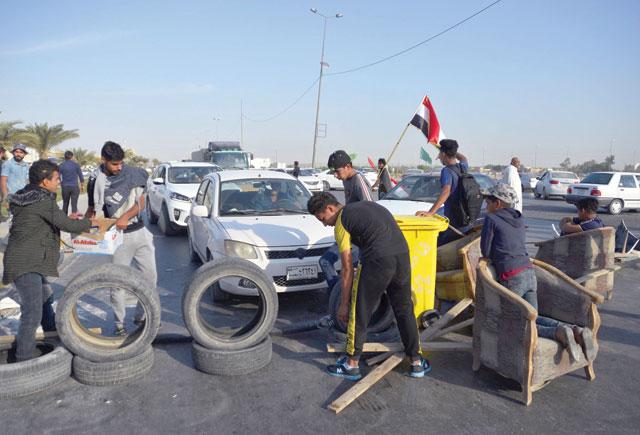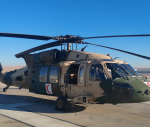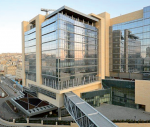You are here
From Baghdad to Basra, the faces of Iraq’s ‘October Revolution’
By AFP - Dec 11,2019 - Last updated at Dec 11,2019
BAGHDAD — They hail from Basra's poorest slums and Baghdad's best universities and count among their ranks artists, tribal dignitaries and desperate young men. Iraq's "October Revolution" reflects a diverse society.
But the people hitting Iraq's streets since October 1 have one thing in common: They are frustrated and sad but immeasurably determined to see their oil-rich homeland shed government graft and sectarian politics.
In a flowing black veil, with the Iraqi flag draped over her shoulders, Um Qassem emanates steely courage as chaos rages around the 53-year-old woman: Military-grade tear gas canisters and smoke bombs tear by, leaving trails of grey, orange and purple smoke in the air.
Fired by security forces near Baghdad's main protest camp of Tahrir Square, such canisters have proved lethal, cracking protesters' skulls, necks and rib cages.
"I've got a revolutionary soul," says the 53-year-old after spending almost two consecutive months on Tahrir, in the eye of the storm.
She says she has joined every demonstration in Iraq since ex-dictator Saddam Hussein was toppled in the US-led invasion of 2003, his regime replaced by a ruling system now slammed by protesters as inefficient and corrupt.
"The politicians have villas and we've got nothing at all," says Um Qassem, who can neither read nor write.
'Armoured Division'
To fight back, protesters have formed "special units", or teams of men in bicycle helmets and thick gloves who pour water onto the incoming canisters or kick them back at police.
One 21-year-old man has scraped together what he can for the dangerous job: A blue construction helmet, a first aid kit strapped to his forearm and a grubby white welding glove to toss the grenades back.
Another wore an oxygen mask and carried a makeshift shield made of part of an aluminium barrel, with an Iraqi flag emblazoned on it.
A third man looked ready for war, sporting face-paint like DC Comics character the Joker, a flak jacket and a metal grate spray-painted with the words: "Tahrir Armoured Division”.
They are beloved by the protesters for putting their lives on the line to keep canisters away from the crowds trying to get on with their revolution.
Women on the front
But in case a projectile makes it past that first line of defence and wounds an activist, the volunteer medics come in.
Dotted around Tahrir Square are field clinics where young medical students or protesters with rudimentary first aid knowledge treat those suffocating from tear gas, hit by a rubber bullet or wounded by live fire.
Fatma, 23, wears diving goggles and a medical mask to protect herself from clouds of tear gas as she squirts bottles of serum on protesters affected by the smoke.
"It's the first time I'm protesting," says Sahar, 22, an engineering student, only her eyes visible behind a mustard scarf wrapped around her face.
"I'm not afraid," says the young Baghdad native, packing some medical equipment and bravely trekking to the frontline, where teenagers are facing off against security forces.
Martyrs, memorialised
Red eyes, bloody wounds and streaks of soot from burning car tyres: Actor Muntazar Ali recreates them all for an emotional street theatre production in his protest-hit hometown of Basra.
He played a demonstrator shot dead in a salvo of bullets and tear gas just a few hundred metres from where real violence was playing out.
The painfully realistic play brought the mostly-male audience to shoulder-shaking sobs, many of them having lost a friend or relative in weeks of bloodshed.
More than 450 people have died and nearly 20,000 have been wounded, a mounting death toll that pushed Ali Hussani, a 34-year-old tribal member, to hit the streets.
"I'm here so the police officers and soldiers who killed protesters will be judged," he says, a traditional checkered scarf carefully wrapped around his head.
Only the beginning
In Tahrir, there are clans and clerics, like 41-year-old Nasser Al Waili. There are Instagram stars and university professors including Adel Naji, 56.
But the protests' engine is the students less than half their age: Schoolchildren defying their parents to skip class or activists bringing food to the square despite threats of kidnapping.
They are Zein Rafid and Hassan Al Tamimi, Banin Diaa and 24-year-old Taha Mushtaq.
"We want change," says Mushtaq frankly, his large eyes framed by imposing eyeglasses.
They are proud of turning protest spots into melting pots, where they can speak freely and build the society they have always dreamed of in Iraq.
"We want to make everything more beautiful," says one 20-year-old building painter, retouching chipped sidewalk paint near Tahrir.
The participation of youth, 60 per cent of Iraq's 40 million people, has moved their elders.
"Those of us with white hair should also be here to support the youth," said Hassan Abu Alaa, 65, fondly known as the "sheikh of the protesters".
In Basra, 22-year-old Minatallah Mohammad paints a mural of deep blue seas and star-studded skies as part of anti-government protests — a hopeful horizon for the many thousands of young people putting their aspirations into this "October Revolution".
Asked what he wanted out of the uprising, a demonstrator wearing a "Guy Fawkes" mask, a symbol used by anti-establishment protesters everywhere, barely paused to think.
"A future".
Related Articles
BAGHDAD — At 16, Maram is as old as the political system she and fellow Iraqi youth are railing against.
BAGHDAD — Iraqi security forces fired live ammunition at protesters in the capital Wednesday as tensions rose elsewhere in the country betwe
BAGHDAD — Anti-government demonstrators spread to a second bridge in the Iraqi capital Saturday after security forces retreated from a key a

















